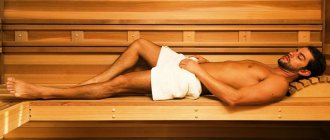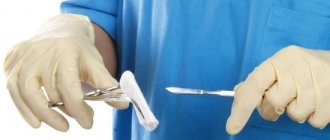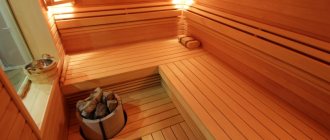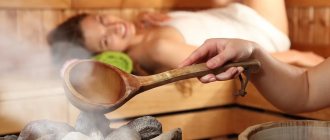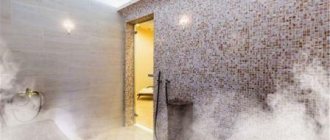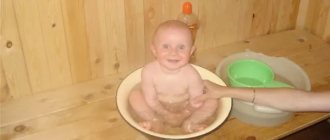Often, going to the bathhouse becomes not only a way of cleansing and relaxation, but also a pleasant time in the company of friends. However, doctors do not recommend indulging in certain foods and drinks both before and after visiting the bathhouse. This is due to heavy loads caused by high temperatures and humidity. So what can you eat before and after bath procedures?
What to eat before visiting the bathhouse
Before visiting the bathhouse, it is strongly recommended not to overeat and eat heavy foods, for example, meat, smoked meats, and other fatty foods. Such restrictions are due to the fact that under the influence of high temperatures, blood flows from the organs to the surface of the skin, and in order to digest heavy food, the stomach must be supplied with a large amount of blood. In the sauna, digestion slows down, which can cause discomfort and even stomach pain from heavy food.
It is better to give preference to light snacks - yoghurt, fruits, vegetable salads and soups. Doctors recommend eating slow carbohydrates before the steam room - boiled potatoes, corn, pumpkin, any legumes, pears, berries and some other foods.
If you still cannot avoid overeating, then you should wait 4-5 hours before going to the steam room.
Russian bathhouse is cheerfulness, health and beauty. By visiting the steam room, you can be cured of many diseases and significantly strengthen your natural immunity. But, like any medicinal product, the bathhouse has its own contraindications and rules of use. So, in order to always be in good shape, it is not at all necessary to go to the steam room every day. One visit to the steam room for 1-2 hours (with breaks every 10 minutes) will be enough to keep your internal batteries charged for several days. And then the bath procedure can be repeated.
However, going to the steam room is not so much a medical procedure as a pleasant pastime. Rarely does anyone visit a bathhouse solely for treatment. Most people who like to indulge in the park just want to relax and get rid of all worries and problems from their souls. And I must admit, the Kyiv bathhouse is the best way for this.
Now let's talk about what you can and cannot do in the bathhouse. Before entering the steam room, be sure to put a special felt cap on your head. This is not only a folk tradition, but also reliable protection against heat stroke. Contrary to popular belief, a steam bath is not intended for washing with soap. The foam washes away a thin layer of fat from the body, and the skin becomes extremely sensitive to high temperatures.
The maximum you can afford is to rinse off in the shower after your next visit to the steam room. Moreover, each time you should gradually reduce the water temperature. A cold shower combined with high temperature in a steam room effectively hardens the body and strengthens the nervous system.
But dousing with ice water after, popular among bathhouse lovers, is a big stress for the whole body. If you have problems with your heart or blood vessels, such a shock may be the last in your life.
Many women believe that dousing them with cold water after leaving the steam room helps them lose weight quickly. In fact, this is nothing more than a myth. Moreover, such a procedure stops sweating, and therefore the process of liberation from waste and toxins. For the same reason, you should not drink cold water after a bath.
Many people are interested in the question of whether it is possible to eat before and after a bath. Let’s just say that you don’t go to the bathhouse on a full or empty stomach. It is best to eat 2-3 hours before the bath, while you should still feel slightly hungry. As a rule, people do not eat in the bathhouse itself. You can only drink slightly cool water in small sips. Better yet, just rinse your mouth, and after finishing all the bath procedures, drink a glass of cranberry juice or kvass.
Overweight people often complain of unbearable thirst after a steam bath. In fact, this is a false reaction of the body, and it is not worth indulging in it by drinking one bottle of water after another. If you slowly drink just one or two glasses of water, the liquid will quickly be absorbed and the thirst will stop. Whereas there will be no benefit from liquid drunk in one gulp. Is it possible to drink beer after a bath? Actually, it’s not worth it, but if you really want to, you can, but not more than one mug.
Who should not go to the steam bath? For advanced or severe pulmonary diseases, infectious and skin diseases, epilepsy or oncology, the steam room will only worsen the course of the disease. For colds, you can steam only if there is no elevated temperature. For people who have had a heart attack, pregnant women and children under 3 years of age, a bathhouse is strictly contraindicated.
Author: Varvara Pavlyukova
What to eat after the steam room
In the bathhouse, a person cleanses his body of harmful substances that come out along with a lot of sweat. Naturally, after visiting the sauna, the body becomes dehydrated and the main task is to restore water balance.
You should not have a meal immediately after the steam room, since the blood has not yet rushed to the organs, you need to wait an hour and a half.
As for food, the best option would be light soups - lean borscht, chicken soup, cabbage soup and other vegetable liquid dishes.
To achieve the best effect from visiting a bathhouse, you need to consume as many vitamins as possible, which are found in fruits and vegetables. You can also purchase ready-made vitamin capsules at the pharmacy.
Particular attention should be paid to drinks. Of course, the best option after visiting the bathhouse will be water to restore the water-salt balance, but you don’t have to limit yourself to it. It has long been customary in Rus' to drink healthy drinks after a steam room - fruit drinks, juices, kvass. These drinks contain a lot of vitamins and they only benefit a dehydrated body. Particularly popular was a drink made from beets, carrots and radishes with a small amount of honey. In the modern world, such a drink is called a smoothie.
Tea is also a good option. Most often, people prefer regular black and green tea, but herbal tea is much healthier. For example, rosehip decoction is a real storehouse of many vitamins, chamomile decoction is calming, and mint tones and helps you collect your thoughts.
Food in the bathhouse
According to many, the Russian bath is a holiday for the soul and body; it not only allows you to strengthen the body and has a positive effect on health, but also helps relieve stress and relax psychologically. However, in order for the bathhouse to bring only benefits, it is important to follow all the rules, this applies to preparation, behavior in the bathhouse, and, of course, food and drinks.
As a rule, visiting a Russian bath involves several visits to the steam room and several breaks when a person relaxes in the dressing room. Such an event lasts longer than one hour, and therefore it is no wonder for a steaming person to get hungry. What should you eat before the bath, what after, and what should you take with you?
- Food before the bath. It is better not to take a steam bath on an empty stomach, but at least one and a half to two hours should pass after eating. First of all, this is due to the fact that when food is digested, blood rushes to the stomach, whereas when it steams, it flows to the skin. In a person who has just eaten, this can cause dizziness and other problems in the body. The meal itself should not be too dense; it is better to choose lighter and healthier dishes, for example, low-fat soups, pasta made from non-durum wheat, vegetable stew or salad. It is better to avoid fatty foods, sweets and smoked foods.
- Food in the bathhouse. Thermal stress on the body is certainly accompanied by sweating and the release of salts. The water-salt balance in the body must be regulated, and therefore you need to drink a lot. Fruit drinks, compotes, herbal teas, water, and kvass are suitable. You can drink a glass of beer, but no more. Stronger alcohol is not allowed. Light snacks will help satisfy the hunger that will arise: boiled shrimp, vegetables, fruits, nuts, cheese, canapés, you can eat a little light salad. It is not necessary to take a lot of different snacks to the bathhouse and eat them all there; count on the number of people. The main rule is not to overeat.
- Food after the bath. After a few vapes, you are guaranteed to have a voracious appetite, but you should not be led by hunger. It would be better to wait at least half an hour: this feeling will go away on its own. At this time, you can drink herbal tea or kvass. After this time, you can start eating, but again, you shouldn’t get carried away with fatty foods; it’s better to make a choice in favor of healthier dishes. These can be salads, kebabs of meat and vegetables, a cheese plate, spaghetti and pasta, vegetable and fish soups, fruit and vegetable plates, boiled or baked meat, fish, seafood.
To summarize, if you are going to the sauna with your own food, opt for lighter dishes and be sure to get yourself something to drink. Of course, you shouldn’t remain completely hungry either; that would be a completely different extreme, which would also not be beneficial. Take fruits and vegetables, cheese, cooked seafood, herbs, boiled eggs, etc. Enjoy Your Bath!
Contraindications to visiting baths and saunas
- Heart disease, hypertension
- Oncological diseases
- Flu and other acute viral infections (with fever)
- Epilepsy
- Pregnancy (with caution)
- Critical days for women
- Head injuries
- Contagious skin diseases (in this case you can simply infect others)
- Alcohol intoxication
- Empty or too full stomach
An alternative for those who cannot, for some reason, visit a classic Russian bath or sauna is the so-called “cedar barrel”.
When going to a bathhouse or sauna, collect the necessary set of things that will be useful to you in the steam room and in the relaxation area. Observe the rules of hygiene especially carefully and use individual bath accessories in public baths and saunas; it is unknown what diseases you can pick up there. Be carefull!
When should you eat after a bath or sauna?
If going to the bathhouse is not just fun for you, you should wait 2 hours after the bath before eating. For example, if you would like to lose extra pounds, it is better to eat after a few hours. after a bath you can, during the first trip you can lose up to two kilograms with the right approach. At the same time, you will not lose muscle mass, but only fat. But to do this, you should not rush to eat in the intervals between steaming and immediately after the bath.
And don’t forget to drink plenty of fluids while vaping—this will definitely help your kidneys, as well as your skin cells. By the way, about the skin. To cleanse pores and skin, you can mix sea salt with sour cream and apply to problem areas. You need to steam with the “mask” applied. You can also get good sweating by mixing salt and honey. Works great.
Good luck in the steam room. Don't overeat)
Depending on whether the digestive system functions normally or whether there are malfunctions in its activity, diseases, or peculiarities of its work, everyone decides for themselves what and when to eat before the bath, what to eat in the bath and what dietary regime to follow immediately after the bath. However, there are a number of general recommendations on this matter.
You should not go to the bathhouse immediately after a heavy meal (after lunch, dinner). One of our ancient healers recommends taking bath procedures 4-5 hours after a heavy meal.
Antonio Sanchez, mentioned earlier, wrote: “Many people go to the bathhouse shortly after lunch or dinner. But then the bathhouse becomes harmful... This causes a great heaviness in the whole body... The digestion in the stomach is damaged... This abuse is as harmful as the reasonable use of the bathhouse is beneficial.”
When visiting a bathhouse with a full stomach, unpleasant consequences may occur, especially if your stay in the steam room or bathing procedures last for a long time. When the skin is exposed to high temperatures, blood from the internal organs rushes to the skin, and the work of the internal organs is somewhat reduced. Digestion slows down, since this process requires an abundant supply of blood to the digestive organs. A bolus of food, especially in a full stomach, stops for a long time
is, undigested food begins to ferment (especially carbohydrates), then undigested enters the small and then the large intestine, and the entire digestive system begins to suffer. Painful symptoms intensify if a person generously dilutes bath procedures with tobacco smoke. A smoker in a bathhouse, especially in a steam room, finds it difficult to breathe and gets a headache. And if alcohol is added to a full stomach, tobacco smoke (which also partially enters the stomach) (which is practiced by many in the bathhouse), then the bathhouse turns from a health-improving and medical institution into an extremely harmful establishment.
Before a bath, you should not eat foods that are difficult and take a long time to digest. These are primarily meat products, legumes, various types of smoked meats, whole grain products, heavily fried foods, etc. containing a large amount of tannins; products containing a lot of fat, especially animal fat (cakes, ice cream, creams, etc.); products stuffed with preservatives, food additives, dyes, artificial flavors, etc. Both before a bath and in general in the diet, you should refrain as much as possible from consuming foods with food additives; you should consume natural products and, best of all, fresh, minimally processed, prepared at home . Let it become an integral part of your lifestyle.
In general, we should dwell in detail on the use of industrially prepared products containing food additives, since most often sauna buffets offer their visitors precisely such products: various kinds of chips.
What kind of nutritional supplements are you? These are chemicals with which products are washed (removing dirt, pesticides, mold), processed to protect them from rotting; use illuminants and dyes to give the product an attractive appearance; apply a layer of chemical to prevent moisture loss; saturate the product with aromatic substances to give it an attractive smell; stuffed with flavoring substances to imitate the real taste; antioxidants are used so that the product does not lose its external characteristics as a result of oxidation; the product is treated with petroleum derivatives to protect it from rancidity; use antimicrobial agents to protect against microorganisms, etc. It is impossible to list all the food additives, preservatives, dyes, flavors, antioxidants and many others used - there are a lot of them, but they are all artificial substances that are harmful to humans. American doctors warn: “Avoid dietary supplements whenever and wherever possible. Remember that the risk-benefit ratio depends directly on what you put in your mouth. Learn to understand food. Don’t spoil your health.”
It is doubly dangerous to consume such products in a bathhouse. The fact is that under the influence of bath factors (temperature, humidity, etc.), all processes in the body change dramatically, especially metabolic processes, and under certain conditions, food additives in these changed conditions can greatly harm the body.
The same applies to drinks, which are no less, and often even more saturated with additives and gases.
Overweight people suffering from obesity, as well as other metabolic, liver and kidney diseases should be especially careful when taking such juices and waters.
The most common drink of many visitors to the baths is beer, and quite a few do not deny themselves alcoholic beverages, including strong ones. Healthy young people tolerate such frivolity quite well, although they also cause harm to themselves. As for older people, and even those suffering from various kinds of ailments, it is very dangerous for them to take beer and alcoholic beverages, since this can even lead to tragic results.
And it is absolutely dangerous to take various kinds of stimulants, etc., in a bathhouse.
It is also dangerous to take many medications in a bathhouse: the fact is that the absorption of drugs in a bathhouse is sharply reduced, since blood from the stomach and other digestive organs flows to the skin and the functioning of these organs drops sharply.
You can’t go to the bathhouse with a completely empty stomach. Russian doctor G. Sobolevsky for another 200 years
nnd got1 gopal before the bath to give an enema to those who suffer from constipation. He wrote: “When the stomach and intestines are aggravated, a rush of blood to the head may occur in the bath,” and the digestive organs will stop working.
What and when can you eat before visiting the bathhouse? On a bath day, it is better to stick to a gentle diet in the morning.
For breakfast, it is advisable to use fruits, vegetables, wild vegetables, to which you can add fish and seafood, eggs, dairy products, and cereals.
Then lunch. It is advisable that there are no temptations at the dinner table: wine, fried, smoked, salted, pickled, sweet foods. It is better to eat foods that are easy to digest: vegetables, fruits, cottage cheese, fermented milk products, egg products, etc.
What can you consume during bath procedures? In many regions of Russia, there was a custom to serve several pieces of radish to each visitor at the entrance to the bathhouse, and in home bathhouses, when receiving a welcome or honored guest, the wife or daughter of the owner served him the radish. By the way, that truly Russian custom, together with Russian baths, migrated to some European countries, where they also serve radishes in the bath.
Why is radish served in a bathhouse? Apparently, the reason for this lies in the chemical composition of the plant. Radish is a vegetable plant that people began to cultivate 1.6-2 thousand years BC. According to Avicenna, in ancient times not only cultivated varieties of radish were consumed, but also wild ones. Nowadays, rarely anyone eats radish tops and their juice. Obviously, our ancestors were more intelligent. Reading
from the same Avicenna: “Spring radish leaves, if boiled and eaten with olive oil and murri (sauce), are more nutritious than its root.” Avicenna recommended eating radish leaves “after eating other dishes, because they help digest food, and the juice of the leaves opens blockages in the liver and stops jaundice... Radish stimulates the appetite and stops pain in the liver...”
A bathhouse is a place where you can not only cleanse your body, take a break from everyday hustle and bustle and problems, but also recharge your health “to the fullest,” that is, tone the body as a whole. But you can get serious harm from water-bath healing procedures if you do not adhere to the rules and some of the subtleties of visiting this specific place. First of all, this concerns the diet before, during and after the bath. Let's try to figure out what to eat before and after the bath in order to get the maximum benefit and pleasure from this event.
Still useful and nice
Don’t forget a light and tasty drink that will help replenish the level of fluid in the body after it is actively removed through sweat. Give preference to natural drinks rich in vitamins and microelements, such as herbal infusions, berry fruit drinks, freshly squeezed juices, fermented milk ayran, tan or yogurt.
https://www.youtube.com/watch?v=https:ohNiXdBZClk
Basically, that's all you should put in your bag when going to the sauna. And the last piece of advice: when going to the steam room, devote this time only to yourself. Try to relax as much as possible, relieve tension and leave all problems at the door, then the sauna will give you exactly the effect for which it was invented.
